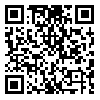1- University of Isfahan
2- University of Isfahan ,v.minasian@spr.ui.ac.ir
2- University of Isfahan ,
Abstract: (76 Views)
Background: Clinical studies have demonstrated that diabetes, as a metabolic disorder, can significantly impact the quality of life of individuals affected by the condition. Physical activity has been identified as a potentially effective therapeutic intervention for managing diabetes in these individuals. This study examined the correlation between serum levels of GLP-1 and the hormones thyroxine, TSH, insulin, glucose, HbA1c, VO2peak, as well as various anthropometric indicators after eight weeks of calisthenics exercises.
Methods: This semi-experimental study involved 14 sedentary children with type 1 diabetes, averaging 12.42±1.28 years, selected through non-random sampling. The participants performed calisthenics exercises for eight weeks (three sessions per week). Physiological assessments and blood samples were collected 48 hours before and after the training period. The relationship was analyzed using Pearson's correlation test, and intra-group changes were assessed using paired t-tests.
Results: The findings demonstrated a positive and significant correlation between GLP-1 and insulin both before (r=0.703, p=0.005) and after the exercise intervention (r=0.668, p=0.009). Additionally, an inverse and significant correlation was observed between GLP-1 and waist circumference (WC) levels before (r=0.633, p=0.019) and after exercise (r=0.575, p=0.043), as well as between GLP-1 and body fat percentage after exercise (r=0.676, p=0.007). In terms of intra-group changes, the results indicated a significant increase in GLP-1, insulin, and VO2peak, along with a significant decrease in WC.
Methods: This semi-experimental study involved 14 sedentary children with type 1 diabetes, averaging 12.42±1.28 years, selected through non-random sampling. The participants performed calisthenics exercises for eight weeks (three sessions per week). Physiological assessments and blood samples were collected 48 hours before and after the training period. The relationship was analyzed using Pearson's correlation test, and intra-group changes were assessed using paired t-tests.
Results: The findings demonstrated a positive and significant correlation between GLP-1 and insulin both before (r=0.703, p=0.005) and after the exercise intervention (r=0.668, p=0.009). Additionally, an inverse and significant correlation was observed between GLP-1 and waist circumference (WC) levels before (r=0.633, p=0.019) and after exercise (r=0.575, p=0.043), as well as between GLP-1 and body fat percentage after exercise (r=0.676, p=0.007). In terms of intra-group changes, the results indicated a significant increase in GLP-1, insulin, and VO2peak, along with a significant decrease in WC.
Conclusion: The findings of this study show that engaging in calisthenics exercises can be effective in reducing the negative effects of type 1 diabetes and increasing the health of diabetic children.
Send email to the article author
| Rights and permissions | |
 |
This work is licensed under a Creative Commons Attribution-NonCommercial 4.0 International License. |





